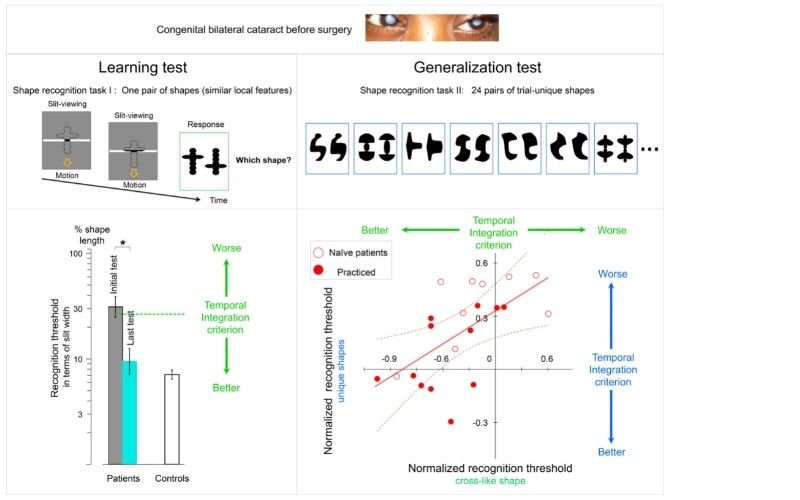Visual perception requires massive use of inference. Particularly challenging is anorthoscopic vision – when an object moves behind a narrow slit such that only a tiny fraction of it is visible at any instant. Impressively, human observers correctly recognize objects in slit-viewing conditions by early childhood, via temporal integration of the contours available in each sliver. But can this capability be acquired if one has been effectively blind throughout childhood? We studied 23 Ethiopian children which had bilateral early-onset cataracts (Top panel) and surgically-treated only years later. We tested their anorthoscopic vision, precisely because it requires a cascade of demanding visual inference processes, to perceive veridical shape. Failure to perform the task may allow mapping specific bottlenecks for late visual recovery. Initially, many were unable to recover shape under slit-viewing conditions, necessitating temporal integration. However, when retested later, almost all patients could judge veridical shape (Left panel). This acquired capability often transferred to novel stimuli (Right panel). Thus, learning was not limited to the specific visual features of the original shapes. These results indicate that plasticity of sophisticated visual inference routines is preserved well into adolescence and vision restoration after prolonged early-onset blindness is feasible to a greater extent than previously thought.



